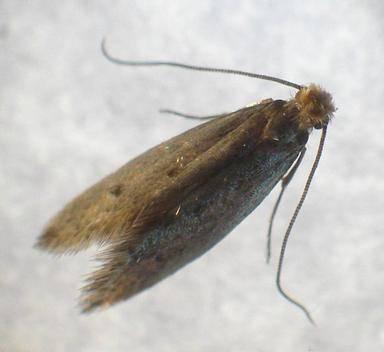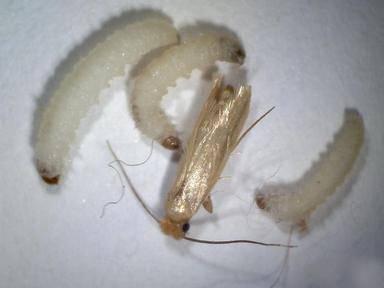Clothes Moths
Return to Natural Resources Agent Articles
You'll most likely first notice the holes in fabrics or see the evidence of larva cases, which are silken and cigar shaped. Occassionally people find the adults, small golden yellow brown moths, but they avoid light and are secretive. It's the larva that do the most damage as the adults don't have effective mouthparts.

The larva feed on soiled natural fibers like cotton, linen, and silk. Sanitation is the best way to avoid these pests in your home, cedar wood works to repel the insects but quickly loses effectiveness. Thoroughly clean cloth before storing by washing, ironing, or dry cleaning. If you find evidence of these moths or larva, you'll need to take more aggressive action.

For chemical control, insecticides approved for indoor household use that contain pyrethroids and list clothes moths on their label.
If you need help with identifying insects, take a high resolution photo and send it in to our office, or bring in the insect in a container.
Find more information in the K-State Research and Extension Household Pests of Kansas.